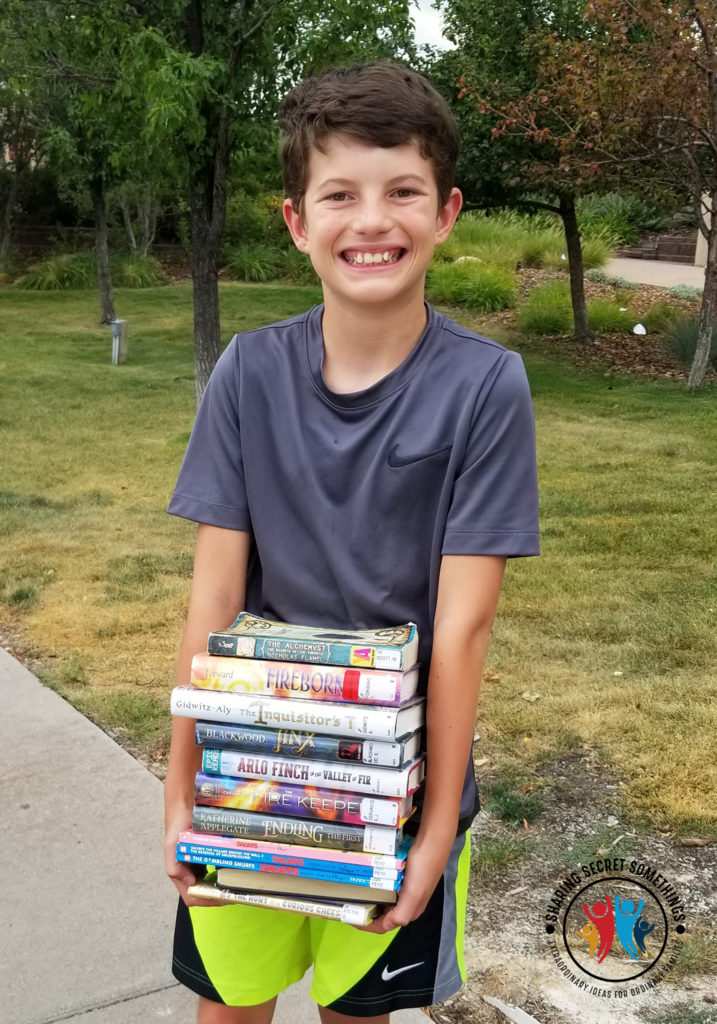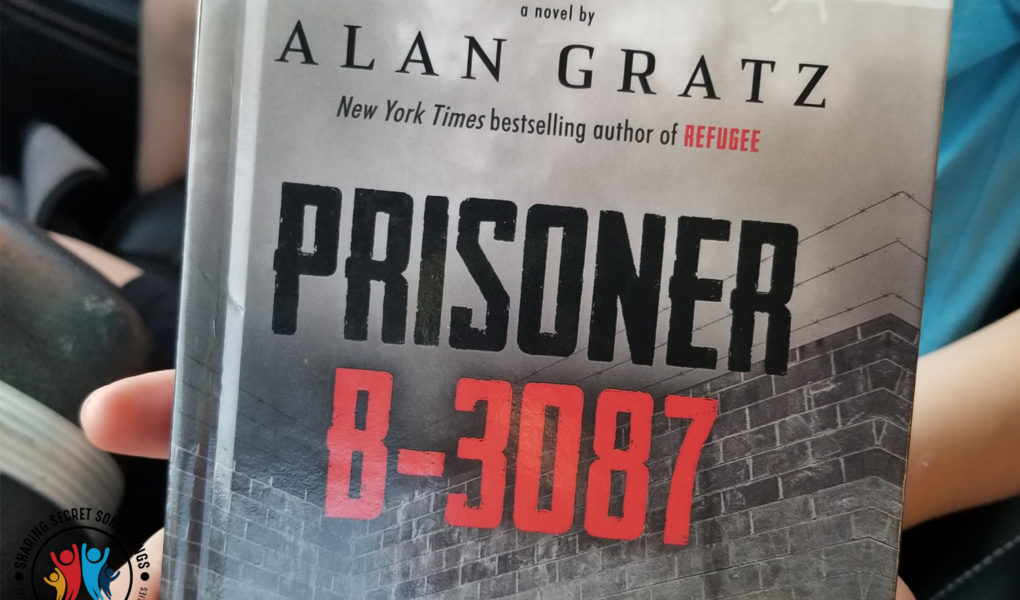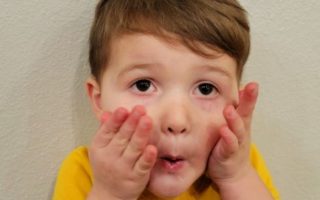In his Battle of the Books reading club, my 12-year-old (7th grader) had the opportunity to read a book about the Holocaust. Now, you have to know that I love to read. I love to read to my children, to myself, to a classroom. Books are definitely my favorite. Isaak also loves to read and has read a remarkable number of books for his age. I have also read several books on the Holocaust. I think that it is important for everyone to understand the atrocity of what happened during that time and to learn from the events leading up to it. If we know what happened we are more likely not to repeat it. I think I have read up on it out of sheer curiosity as well. So, when I saw the book that Isaak brought home, I decided that I needed to read it along with him. He was already halfway done by the time I got my hands on it, so I dug in! More than anything though, I wanted to read this book to make sure that I could speak with my son about it. The Holocaust is a heavy topic by anyone’s definition, and I wanted to be a sounding board for him when he came across difficult things in the book, because, let’s be honest, there is no book written about the Holocaust that doesn’t contain difficult things.
I knew that this experience would afford me the opportunity to speak about some tricky things with my kid. However, I didn’t quite realize how good it would be for me to see things through his eyes and help him navigate through some current events as well. Also, by placing myself in the position to discuss this book with him, I was trying to lay a foundation of trust in which he feels safe to discuss other difficult things in his life. I know he may not always come to me, but I hope he knows that he can.

The book is entitled, “Prisoner B-3087” and it is written by Alan Gratz.
So, let me start this brief and incomplete review by saying that this book was completely age appropriate. There were no swear words or sexual content. There was, of course, violence, but I felt like it wasn’t more graphic than was necessary to demonstrate the difficulty of the time.
Ok, I will share with you 3 amazing topics that I was able to discuss with my son as a result of reading this book with him. (and by “with him” I mean at the same time as him, not aloud with him). This story is based on true events. A boy named Yanek was around 10 when the war started and 16 when the Americans came to end the war. During the course of the war he was a prisoner in 10 different concentration camps. Like so many Jews during this terrible war, he endured the loss of his family, starvation, and extreme fatigue. One of my favorite parts of the book happened shortly after he had arrived at a different concentration camp. While in his bunk one night, a father announced to the other men in the room that there was a boy that would become a man that day as he had turned 13. He needed 10 men to come participate in his Bar Mitzvah. Several of the men declined, complaining that there was no point and that the guards would come and kill them if they discovered what they were doing. Yanek hears all of this dissent and suddenly realizes that there is nothing more important in that moment than participating in that Bar Mitzvah. The Nazis cannot take this from them as well. As a 15-year-old he had already had his own Bar Mitzvah, in the basement of an old building under the cover of night, hiding from the Nazis. He said, “I will do it!” and after he spoke up, several of the other men agreed to participate and stand with the boy who was turning 13. They had many more than the ten men that were needed. When I asked my son how he felt about that part he said, “Oh yeah, that was good. Just the power of one person willing to risk it for the right reason.” I whole heartedly agreed, and think that may have been my favorite part of the whole book. Such a powerful example of the influence of one!!

Another scene worth mentioning was toward the end of the war, and the book, when the Jews are being transferred from one concentration camp in Germany to a concentration camp in Poland. They had to walk and were only given a small portion of bread to hold them over until they arrived. As they walked through Germany, the citizens, including the children were full of vitriol toward the prisoners. When they saw them they were rude and disrespectful as they yelled and ridiculed them. Then as they walked through Czechoslovakia the atmosphere was different. The German soldiers that accompanied them were quieter as they directed the Jews on the street and the Czech citizens, that were not in agreement with the way the Nazis were treating the Jews, showed dissent by leaving bread on their doorsteps and windowsills for the prisoners. They did not try to fight the Nazis, knowing that they would be beaten, but wanted to show that they disagreed with what was happening. In one city there were even kids that sat on the rooftops throwing bread out to the prisoners. My son and I were able to speak about how they expressed their discontent without violence. How they stood up against a seemingly impossible foe through charity, and sharing what little they had with those that had less. What a fantastic lesson to learn. Yanek expressed relief as he realized not everyone had turned against them. That there was something to hope for still. There was still a world outside of Germany.
The idea of hope was something he battled with throughout the book. Isaak and I both noted that he kept falling back on hope, even in the most hopeless of circumstances.
When I asked Isaak what his favorite part of the story was, he said that he liked the end where he met up with Mrs. Immerglick—a woman that had been his neighbor. Before there were concentration camps, she was not especially kind to him and yelled at him for playing ball in the courtyard of the apartment complex where they lived. When they saw each other at the conclusion of the war, he had to reintroduce himself as he had grown so much. She hugged him and apologized for ever having been mad at him for something so silly. One might say that she had gained perspective. I appreciated hearing that this was his favorite part.
Now, this book is not for the faint of heart, just as any study of the Holocaust needs to be addressed with an understanding of its gravity. It was an awful thing. More horrible than anything that I have had to endure. Isaak’s friend read “The Boy in the Striped Pajamas” and that book is so desperately sad. I would not recommend that be the first book that you choose to read about the Holocaust, or at least not with your kid.
Ultimately, because we read this book, we were able to discuss the strength of character that Yanek exhibited. We spoke about kindness, mob mentality, hatred, overcoming impossible odds, being an advocate for those that are not seen or are betrayed by their society—by OUR society. This exercise of reading this book with my son ended up introducing so many topics that we need to discuss with our kids. I am grateful for that alone.
As we reviewed the book and the events, I was reminded of a quote from Mr. Rogers. Maybe you’re familiar with it.

“When I was a boy and I would see scary things in the news, my mother would say to me, “Look for the helpers. You will always find people who are helping.”
Now, I realize that the topic of the Holocaust is more than a scary thing on the news. I do believe, however, for all of the horror that it brought, the prejudice, abuse, trauma, and dehumanization of people, that there are so many stories of those that tried to help. Those that hid people in their homes. Those that found it in themselves to stay strong for those around them and lifted others. Even those kids that chose to share their loaves of bread from the rooftops. It’s those stories that I want to remember and share with my children. Even against impossible hatred, love can shine through.
I hope that I can be one of those helpers in scary times. And may our kids be helpers too.
Disclaimer: You know your child best. The book mentioned in the above article is appropriate for approximately 6th grade and up.




